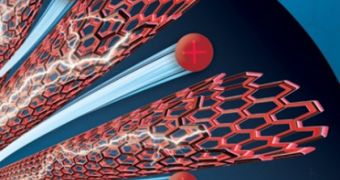A team of scientists from the United States has recently developed a new method for improving the speed of ions, that allows for the charged atoms to move faster than between conventional electrodes.
The work was conducted in labs at the Massachusetts Institute of Technology (MIT) and the Pennsylvania State University (PSU). The work has significant implications for the field of electronics.
Physicists say that the efficiency and speed of actuators and energy harvesters depends on how quickly ions can move between electrodes inside these devices.
An actuator is a machine that can convert electrical energy into mechanical energy, whereas energy harvesters do the exact opposite, turning motion into electricity.
They are used in applications such as producing vibrations in mobile phones and harvesting energy from the motion of the lungs to power pacemakers, respectively.
Both classes of devices usually contain electromechanical materials, such as electroactive polymers, which allow them to fulfill their functions. These polymers are made up of repeating sequences of molecules, tied together in a chain-like structure.
The shape and size of molecules changes whenever an electrical field is applied to the polymer. The speed at which the ions pass through is a determining factor in these molecules' performance levels.
Generally, these materials contain nanoparticles within, that are chaotically dispersed throughout the polymer. This is done to make the material more conductive.
But this approach slows down the speed of ions that pass through, because the electrically-charged particles are forced to zig-zag in the polymer, rather than move in a liniar manner.
The MIT/PSU team managed to circumvent this issue by producing electrodes containing aligned carbon nanotubes (CNT), which can be used in combination with electroactive polymers.
In charge of the team was MIT associate professor of aeronautics and astronautics Brian L. Wardle, who refers to the CNT as “express lanes” for ions to use.
Details of the new work are published in the October 8 issue of the esteemed scientific journal Advanced Functional Materials. This study could enable applications like artificial muscles and robots.
Carbon nanotubes are very good conductors, as they are made of carbon atoms that attach to each other in a tube-like manner. Passing ions no longer zig-zag, but pass through in a straight line. .

 14 DAY TRIAL //
14 DAY TRIAL //